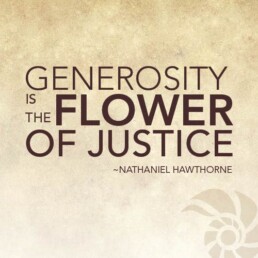
Stewardship
Entering ministry, I had an old-school “hands-off” mentality around the stewardship aspects of church life. I did not have a background that particularly equipped me for financial management; seminary years ago did not do much to train us for either the emerging realities of congregational financial health or the theological understandings that might underpin it all.
But even a few years in the modern parish will bring one up to speed pretty quickly regarding the challenging realities of congregational giving patterns, and 15 or more years may yield some insight. At least that is what I have found.
My theology of stewardship includes four key elements:
- a theology of gratitude-based generosity;
- creating a congregational culture where people understand the meaning of money and develop the skills to talk about money as an integral part of building Beloved Community;
- a year-round approach to stewardship;
- awareness that the financial health of congregations builds on mission-based outreach to and with the larger community
To touch briefly on each…
A Theology of Gratitude-Based Generosity
Although I did not learn stewardship formally in seminary, it was the President of my seminary, Rebecca Ann Parker, from whom my most valuable theological lesson in generosity and congregational giving came. In Blessing the World, she shares this powerful reflection on what she learned:
“To tithe is to tell the truth about who I am. If I did not tithe, it would say that I was a person who had nothing to give, a person who had received nothing from life. A person who did not matter to the larger society or whose life’s meaning was in providing for [my] needs alone. But in fact, who I am is the opposite of all of these things. I am a person who has something to give. I am a person who has received abundantly from life. I am a person whose presence matters in the world, and I am a person whose life has meaning because I am connected to and care about many things larger than myself. If I did not tithe, I would lose track of these truths about who I am.”
What we need to understand about giving is that it our opportunity to say something about who we are. Our giving speaks to our experience of life and community, and takes many forms – and one of them is giving money. Generosity is not the special purview of the wealthy; we know that those who understand scarcity are often quickest to share. We cultivate generous hearts and financial generosity by recognizing gifts and celebrating generosity in all things.
The Meaning of Money
Very often, people do not know much about what money means to them – what it represents, what emotional baggage it carries, what life stories we have about having or not-having money. In society and congregational life, money has often been one of the key “taboo topics,” and even our emerging attention to issues of class have not gone deep into a meaning-filled exploration of money. Therefore, it’s difficult to do broadly successful stewardship and financial health work in congregations because we just don’t know what’s “going on” for people when it comes to money. This is where having theological study and reflection and allowing a fulsome self-awareness around the “meaning of money” in individuals’ lives can make a big difference. An excellent program for this is The Wi$dom Path: Money, Spirit, and Life, a UU exploration. http://www.uua.org/re/tapestry/adults/wisdom
A Year-round Approach to Stewardship
All I mean by this is that congregations are best served when those who help tend the financial health of the community meet year-round, to
- build relationship so they work effectively together and are spiritually fed by the work;
- can take a wholistic view of how to invite folks to serve the church’s mission through giving;
- have a plan for working with new members to begin their giving journey as soon as they join the congregation;
- see their work in the context of the full round of the church year.
Mission-based Outreach
The reality of contemporary congregational giving patterns means congregations need to understand that church budgets need to expect to build 10-15% of their budget on support that comes from outside the congregation – that is, from those in the community who are touched by the congregation, but who are not pledging members.
This means churches need to have a strong outside fundraising strategy, and this is something I feel passion about building with congregations. This aspect is has few general prescriptions, but instead should be built on the strengths and gifts and mission insight of each congregation – but I have many resources and see this as a challenging but exciting aspect of emerging congregational development.
